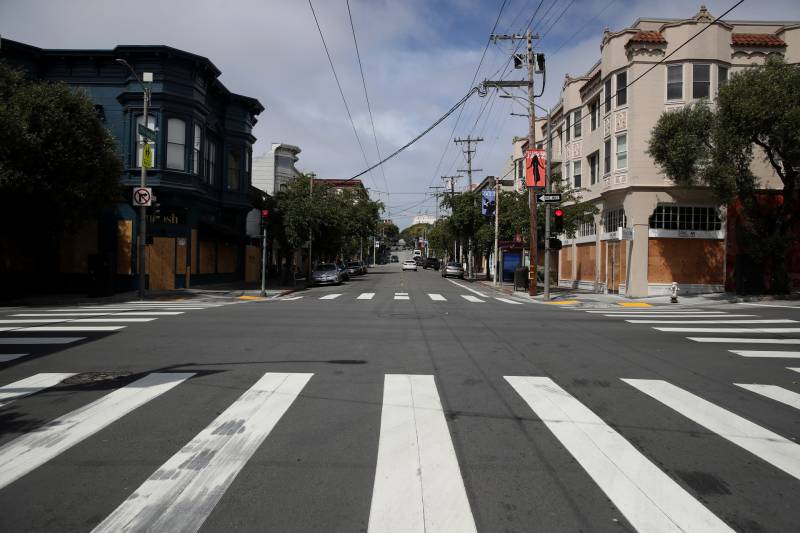Angell did not detail whether the state would be involved in funding research into coronavirus therapeutics, which pharmaceutical companies have often deprioritized because of the lack of a permanent consumer base.
The final two steps on the governor's checklist signaled that a reopening would not mean a return to life that existed before the virus.
Angell said businesses, schools and child care facilities should be prepared to maintain physical distancing and that the state should be prepared to reenter a lockdown if necessary.
"This is a conversation about modifying, about transitioning to a point in the future to when COVID-19 does not pose a threat," Angell added. "It won’t look the same."
The gradual and halting move toward reopening will involve "more individual accountability, more individual responsibility," said Newsom, predicting a future of regular mask wearing, of restaurant waiters serving distanced tables with gloves and disposable menus.
"There’s no light switch here," Newsom said. "I would argue it’s more like a dimmer."
Newsom emphasized that his administration's action will be a "baseline guidance" to inform the decisions on distancing and mask wearing by the state's 58 counties and hundreds of municipalities.
"We will be guided by local decision making," Newsom said.
But a day after President Trump declared "ultimate authority" in the decision to lift physical distancing guidelines, Newsom was eager to promote his roadmap's regional reach. When asked to comment on Trump's assertion, Newsom declined to take the bait, saying, "I'm not going there. I just want to get stuff done."
The governors of Washington and Oregon vowed to follow similar prerequisites for opening as California, and Newsom said other western states could soon join.
"While we have to be careful, we also cannot stand still," said Oregon Gov. Kate Brown, in a press conference earlier in the day. "This virus doesn’t recognize state boundaries."

